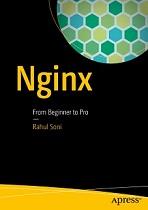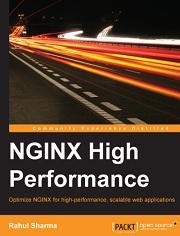HTTP Basics.
HTTP stands for HyperText Transfer Protocol. Since the dawn of the Internet, HTTP has been playing a key role in delivering the content worldwide. In simple terms, you can consider HTTP as a set of rules for transferring files. If you notice carefully while browsing a website, you will find that there are files (like images, text, video, etc.) that display in your browser directly, while others (like zip, rar, etc.) get downloaded. Think about it for a second: why does one file get downloaded, while others get rendered or played in the browser directly? The answer is simply because of how the web server and web client (typically your web browser) are interacting behind the scenes. You can think of HTTP as a language in which the web server and a web client communicates. As a website user, you are simply consuming the visual elements that the website creators planned for you. Hence, unless you are curious, you will hardly notice the underlying communication. It is almost like using a refrigerator. You just need to know that it is used to preserve your food by keeping it cold and what goes in normal comes out chilled. You would hardly ever bother about how it actually works.

What Is a Web Server?
In simple words, a web server is a server that hosts an application that listens to the HTTP requests. It is the web server's responsibility to hear (i.e., to understand HTTP) what the browser is saying, and respond appropriately. Sometimes, it could be as simple as fetching a file from the file system and delivering it to the web browser. At other times, it delegates the request to a handler that performs complicated logic and returns the processed response to the web server, which in turn transfers it back to the client! Typically, the server that hosts web server software is termed a web server or a web front-end server. If you are new to the web server's world, don't worry. By the time you are done reading this book, you will have a good grasp on the subject. Although there are quite a few web servers around, three dominate: Apache, Microsoft Internet Information Services (IIS), and Nginx combined have captured around 85 percent of the market. Each web server has its space and its user base. When you are making a choice, you should evaluate wisely based on your workload. It becomes extremely crucial to make a diligent effort while you are setting up your web server, since migration from one web server to another is typically a painful exercise. Sometimes, it is just not possible and you have to rewrite a lot of code.
Contents at a Glance.
About the Author.
About the Technical Reviewer.
Acknowledgments.
Chapter 1: Introduction to Nginx Web Server.
Chapter 2: Installing Nginx.
Chapter 3: Nginx Core Directives.
Chapter 4: Nginx Modules.
Chapter 5: Nginx Core Architecture.
Chapter 6: Hosting Web Sites on Nginx.
Chapter 7: Nginx and Dynamic Content.
Chapter 8: Load Balancing with Nginx.
Chapter 9: Log Analysis, Monitoring, and Automation.
Chapter 10: SSL, Security, and Authentication.
Chapter 11: Upgrading and Migrating.
Chapter 12: Troubleshooting Tips and FAQ.
Index.
Бесплатно скачать электронную книгу в удобном формате, смотреть и читать:
Скачать книгу Nginx From Beginner to Pro, Soni R., 2016 - fileskachat.com, быстрое и бесплатное скачивание.
Скачать pdf
Ниже можно купить эту книгу, если она есть в продаже, и похожие книги по лучшей цене со скидкой с доставкой по всей России.Купить книги
Скачать - pdf - Яндекс.Диск.
Дата публикации:
Теги: Soni :: 2016 :: Nginx
Смотрите также учебники, книги и учебные материалы:
Следующие учебники и книги:
Предыдущие статьи:












